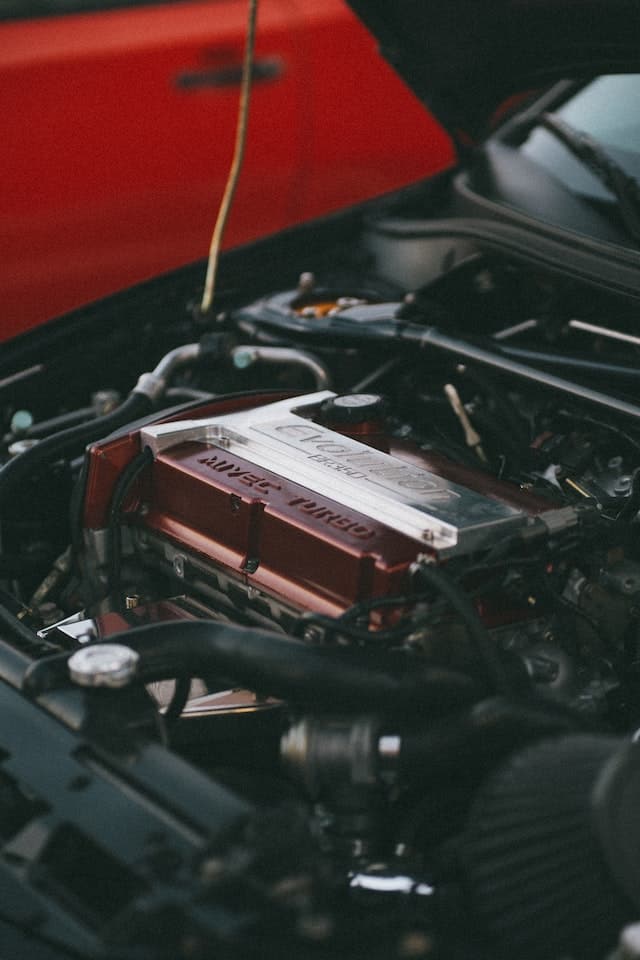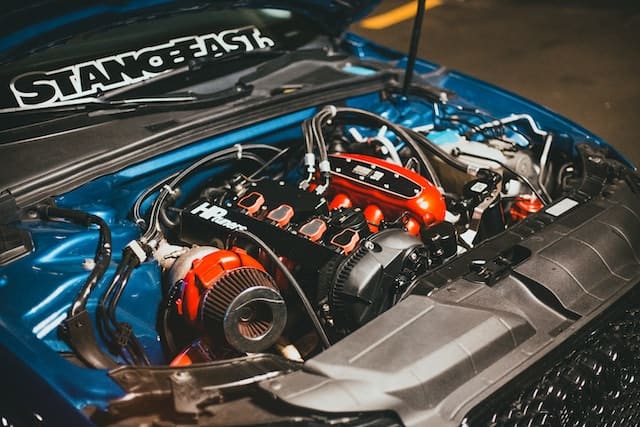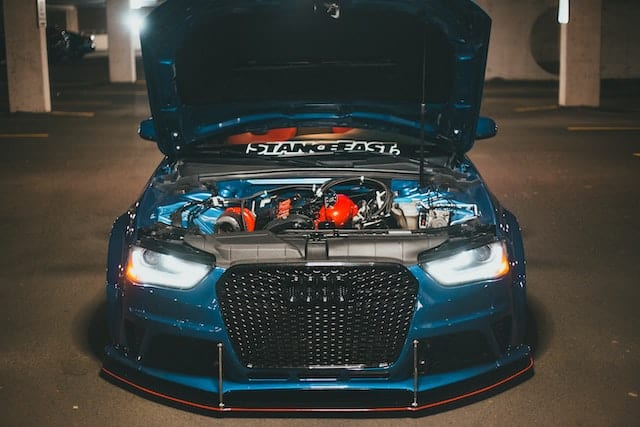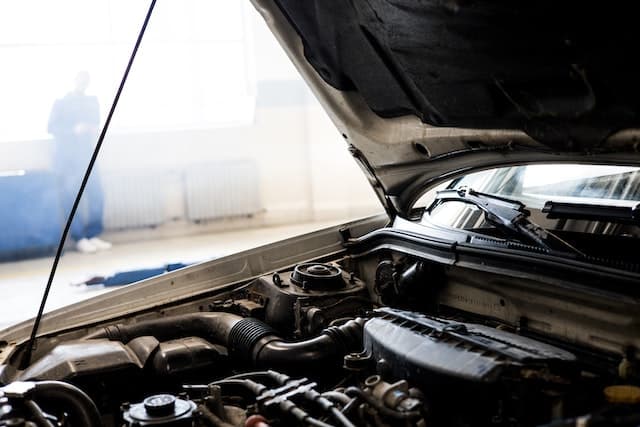There are various methods for increasing a vehicle’s power, but the two most common are ProChargers and turbochargers. It might be tough for car fans to pick which of these two forced induction systems to use because each one has its own distinct benefits and drawbacks.
To assist you in making a knowledgeable choice, we’ll examine the distinctions between a ProCharger vs turbo. We’ll also discuss their benefits and drawbacks.
This guide will offer helpful insights into the world of boosting your engine, so let’s dive right in.
Table of Contents
ProCharger vs Turbo: What’s the Difference?

The primary distinction between a ProCharger and a turbo is how they both compress air. A turbo utilizes exhaust fumes to spin a turbine that compresses air. A ProCharger employs a belt-driven compressor that’s powered by the engine.
Since they can generate boost at lower RPMs, ProChargers are often more responsive than turbos. It has to accumulate enough exhaust gas to spin the turbine and produce boost. However, because they don’t add to the engine’s load, they may recover wasted energy from exhaust gases. Therefore, turbos are often more efficient.
Moreover, ProChargers are simpler to install and maintain than turbos. Turbos also have a higher potential for problems like boost creep and slowness.
The decision between a ProCharger and a turbo comes down to your own tastes and aims in the end. As each system has distinct benefits and drawbacks of its own.
ProCharger
A forced induction device called a ProCharger, often referred to as a centrifugal supercharger, compresses air using an impeller that is belt-driven. The ProCharger is powered by the engine.
Before putting the compressed air into the engine’s intake manifold, the impeller collects it from the air. By doing this, a denser air charge is produced, enabling the engine to burn more gasoline and produce more power. ProChargers may significantly increase horsepower and torque. They’re often used in gasoline-powered engines.
Features

Simple Design and Installation
The small dimensions and straightforward design of a ProCharger are among its key characteristics. ProChargers don’t need elaborate piping or exhaust modifications. This might make them simpler to install and maintain than other forced induction systems like turbos.
Smooth Power Delivery
ProChargers are also renowned for their low-end torque and smooth power delivery. This factor may make them perfect for use in street and strip applications.
More Control and Customization
Certain ProCharger models also include more features like adjustable boost settings. This can give drivers more control over the performance and power of their engine.
Pros and Cons
As every forced induction method has, ProChargers have advantages and disadvantages of their own.
Pros
- ProChargers may create boost at lower RPMs and offer immediate throttle response. This makes them more responsive than turbos.
- They don’t add to the engine’s workload, which may aid to increase engine longevity. ProChargers may also be less likely to experience problems with latency and boost creep than turbo systems, which can be a concern.
- Drivers who desire a quick-installation and responsive forced induction system, opt for ProChargers. They may offer large increases in horsepower and torque. In turn, making them a wonderful alternative for high-performance applications.
Cons
- Due to the fact that they rely on engine power to create boost, they might be less effective than turbos. As a result, fuel efficiency might decrease, increasing the number of times you’ll have to fill up.
- In general, ProChargers can cost more to buy and install than some other systems, in comparison to other sources of extra power.
- ProChargers can produce higher temperatures. To prevent this, it may be necessary to make further adjustments to the vehicle’s cooling system.
To ensure a ProCharger is the best option for your unique needs and objectives, you should do your research. It’s also advised to speak with an experienced technician or tuner. This should be a standard, as you’d with any other modification.
Turbo

A turbo is a forced induction device that compresses air before delivering it to the engine’s intake manifold. The turbo does this by spinning a turbine using exhaust gases as propulsion. A compressor wheel then pulls air from the atmosphere and compresses it. Then, it’s driven by the turbo’s turbine as it spins when exhaust gases pass past it.
In the engine’s combustion chamber, the compressed air is then released. It mixes with the fuel and ignites to provide more power than a naturally aspirated engine would.
Features
Increase Efficiency
Car enthusiasts choose turbos because of their many distinguishing qualities. One of a turbo’s key advantages is that it may increase an engine’s efficiency. It’s possible since it enables the engine to burn more gasoline and generate more power without using more fuel.
High-end Power and Performance
Additionally, turbos are well-known for having high-end power. But also, the capacity to generate significant amounts of boost. This can make them the perfect choice for high-performance applications.
Improved Technology: Increases Boost Performance and Fuel Efficiency
Variable geometry turbos and twin-scroll turbos are two cutting-edge technologies that some turbo models include. They can further boost performance and fuel efficiency.
Pros and Cons
Turbos have their own set of benefits and drawbacks, like every modification.
Pros
- Turbos are quite efficient because they don’t rely on engine power to produce boost.
- They’re very adaptable, with a variety of turbo sizes and configurations available, meaning they can meet varied demands and objectives.
- Exhaust gas energy that would otherwise be lost may be recovered by turbos. This increases the overall efficiency and loweres pollutants.
Cons
- Turbo lag, or the interval between pressing the accelerator and the turbo starting to spin and provide boost, is one of the major worries.
- They may produce a lot of heat, which may cause problems with engine cooling and call for extra cooling system adjustments. Plus, some drivers may take into account the fact that installing a turbo can be more difficult and costly.
- While looking to increase the performance of engines, drivers frequently choose turbos. They can offer considerable increases in power and torque. However, it’s more difficult and expensive to install than some alternative solutions.
It’s crucial to conduct research to ensure a turbo is the best option for your particular needs. Plus, speaking with a knowledgeable technician or tuner will be even better.
What Is the Difference Between a ProCharger and Turbo?

ProChargers and turbos are two of the most often used forced power increase options. There are several significant distinctions between the two systems. Even though both may increase an engine’s performance and economy, it’s best to know what differs. Below is a list of the characteristics that set ProChargers apart from turbos:
Cost
Cost is one of the main distinctions between ProChargers and turbos. ProChargers often cost more to buy and install than turbo, due to the fact that turbos might be more applicable than ProChargers. They’re made to match certain vehicle brands and models. ProChargers also need extra parts, including a separate drive system, which might raise the price.
Power Delivery
When comparing ProChargers with turbos, it’s also critical to take into account how they provide power. When the driver presses the accelerator, the ProCharger is noted for delivering quick power with little to no delay. Because of this, they may be perfect for activities requiring rapid, responsive power, such as street driving or drag racing. Contrarily, turbos are recognized for generating greater power at higher RPMs. This might make them more appropriate for high-speed applications.
Efficiency
ProChargers and turbos differ somewhat in terms of efficiency. While operating at lower RPMs, ProChargers are more effective since they can deliver a constant amount of boost. At higher RPMs, when the engine can’t fully enjoy the extra air, they might be less effective. On the other side, turbos may be quite effective at high RPMs, when they can deliver a large boost in power increase.
Installation

The installation should be taken into account when comparing ProChargers with turbos. ProChargers require less modification to the vehicle’s current systems than turbos. This makes them simpler to install. Still, ProChargers could need other parts, such as an intercooler or special drive system. This might make the installation more challenging. On the other hand, turbos need more substantial alterations. The addition of an exhaust pipe and an intercooler can complicate and lengthen the whole installation procedure.
Maintenance
It’s important to take into account the ProCharger’s and turbo’s maintenance requirements. To keep them functioning, ProChargers need routine maintenance, including the lubrication of the drive system. In contrast, turbos, which might be more sophisticated and have more components that need constant care. As a result, it’ll most likely need more maintenance.
Regular lubrication of the moving elements of the turbo are vital to be kept in check. Also, it’ll need inspection and cleaning of the intercooler and exhaust system.
As a fact, ProChargers and turbos are effective and strong forced induction devices. They may greatly increase an engine’s performance. They do, however, range in terms of price, power output, effectiveness, installation, and maintenance.
When choosing between the two options, drivers must carefully assess their unique needs and objectives. The best option will rely on a number of variables. This can include the budget, driving preferences, and performance objectives.
FAQs
Below, I’ve listed the most frequently asked questions about ProChargers vs turbos:
Is ProCharger, Supercharger, or Turbo better?
The answer to this question depends on a variety of factors. These include the specific application, the driver’s goals, and their personal preferences. Generally speaking, ProChargers and superchargers tend to provide more immediate power. On the other hand, turbos are better suited for high-speed applications.
How Much HP Will a ProCharger Add?
The amount of horsepower that a ProCharger can add to an engine depends on various factors. These include the size and type of ProCharger, the make and model of the vehicle, and the engine’s existing power output. In general, ProChargers can provide anywhere from 50 to 700+ additional horsepower. But this depends on the specific setup.
What’s More Reliable – Supercharger or Turbo?
Both superchargers and turbos can be reliable forced induction systems when installed and maintained properly. But, there are some differences in terms of reliability. Superchargers tend to be simpler in design and require fewer components, making them more reliable overall.
Conclusion
In conclusion, choosing between a ProCharger and a turbo depends on individual preferences. They can be driving goals and specific vehicle needs. ProChargers tend to provide more immediate power, while turbos are better suited for high-speed applications. Both options have their advantages and disadvantages, including cost, complexity, and performance.
Regardless of whether you choose a ProCharger or turbo, it’s important to ensure that the system is installed and maintained properly. This is for optimal performance and longevity. You do this by selecting high-quality components, working with a reputable mechanic, and following recommended maintenance schedules. By doing so, you can get the most out of your system and enjoy the benefits of increased power and performance.
